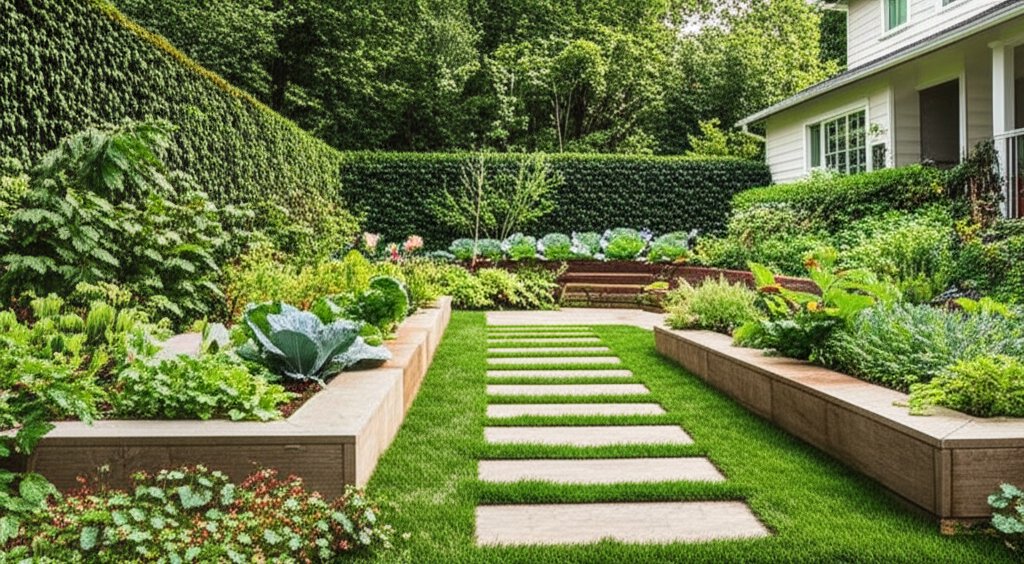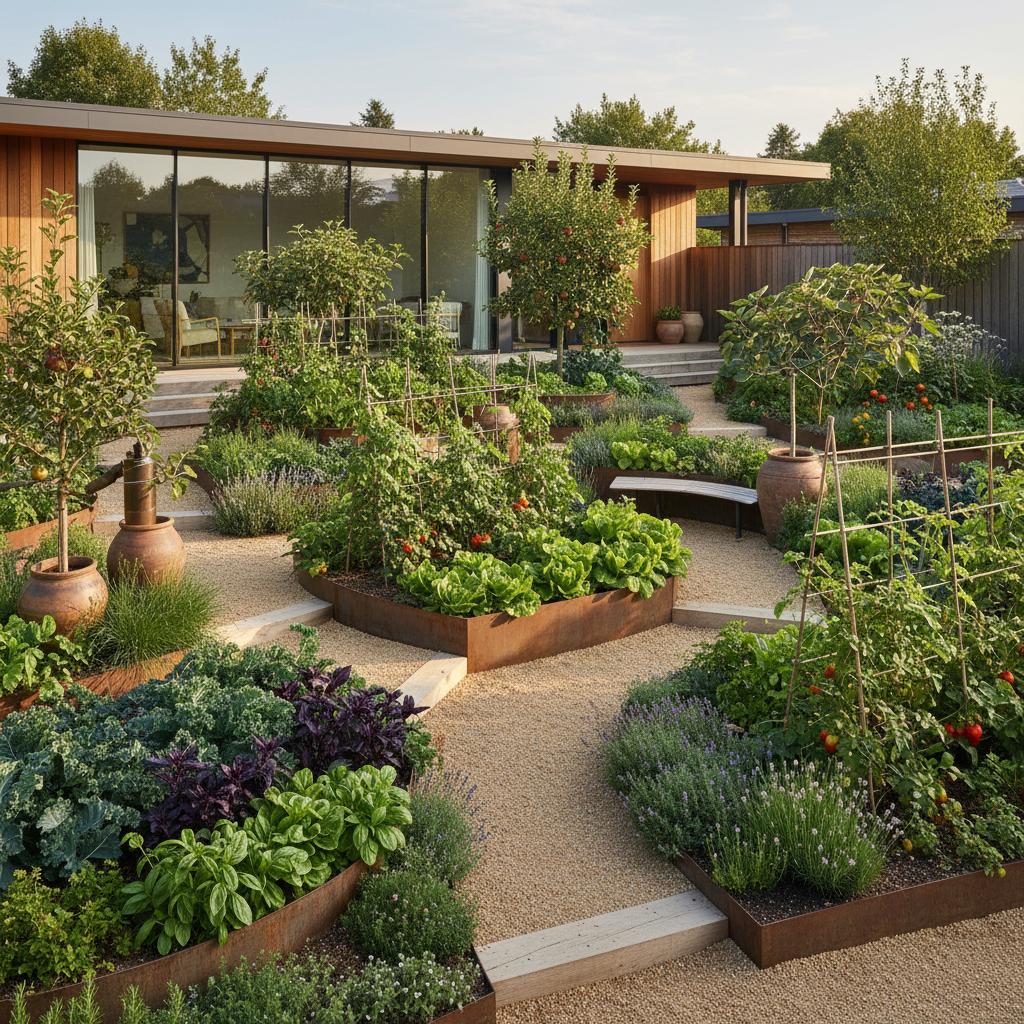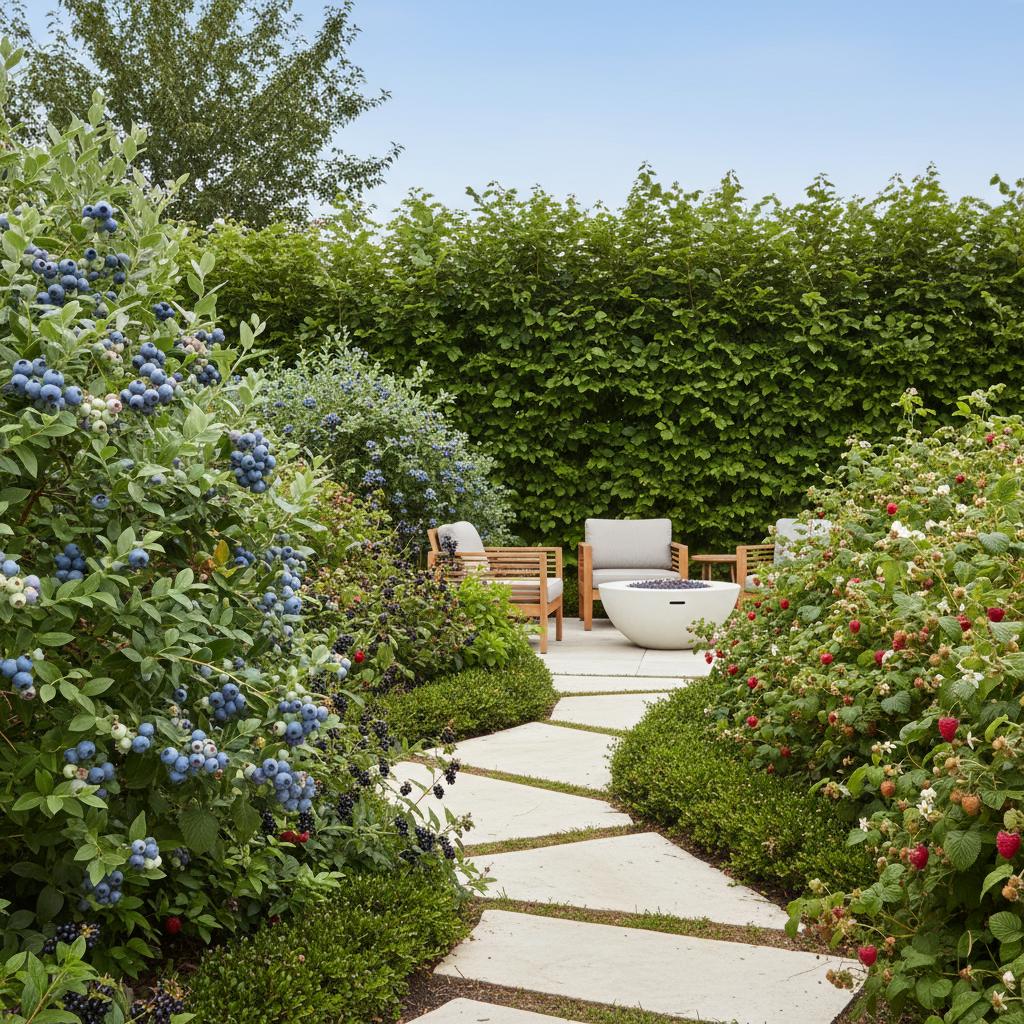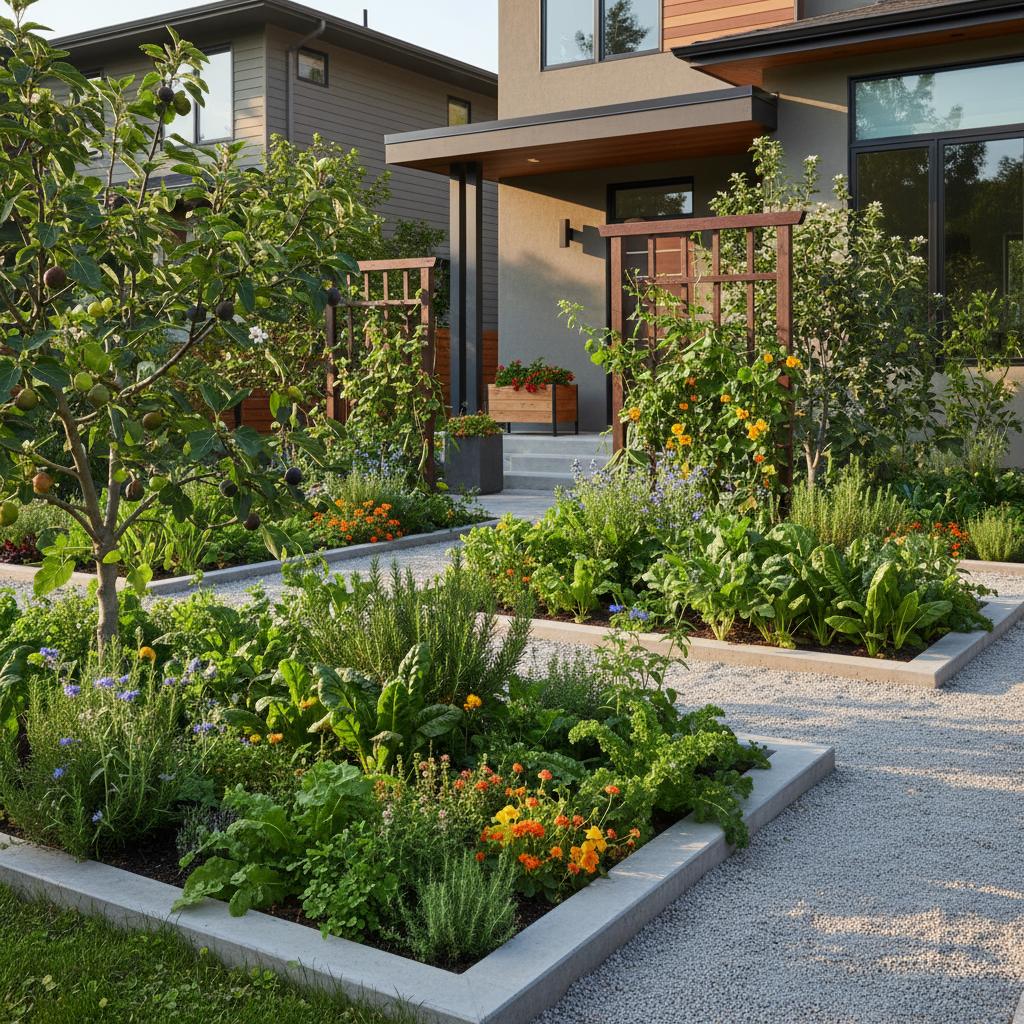Edible Landscaping on the Rise: Turning Front Yards into Productive Gardens
Consider your front yard beyond its role as a simple green expanse. Envision it as a source of nourishment that also captivates visitors. Across neighborhoods, individuals pursue this vision by converting turf into flourishing edible landscapes. This approach integrates visual allure with functional output, starting with a fresh perspective on available space.
Converting a front yard to support food production preserves and elevates curb appeal. Such landscapes feature vibrant hues, diverse textures, and aromatic profiles, all while yielding herbs, fruits, and vegetables. These elements link residents directly to natural cycles, fostering both sustenance and seasonal awareness.
Assessing Your Space for Opportunities
Prior to any groundwork, evaluate your yard thoroughly. Track sunlight patterns by noting exposure in morning, midday, and afternoon across multiple days. Observe drainage by monitoring water flow after rainfall to identify low spots or runoff paths. Assess wind patterns and shade from structures or trees to pinpoint sheltered or exposed areas.
View the yard as a dynamic framework for growth. Replace ornamental shrubs with productive alternatives like compact blueberry varieties or evergreen rosemary borders. Transform narrow lawn strips into elevated beds for salad greens or compact tomato plants. Aim for an organic integration that enhances rather than mimics agricultural settings.
Developing a Harmonious Layout
Effective edible landscapes equilibrium utility and aesthetics. Establish intentional framework through pathways and focal points, balanced by organic plant groupings. Sketch a basic diagram: outline traffic zones, potential seating, and high-light areas. Assign plants accordingly, prioritizing sun-lovers for brightest spots and shade-tolerant options elsewhere.
Incorporate these strategies for cohesion:
- Layer vegetation heights. Position dwarf fruit trees or vertical climbers at the back, mid-level berry shrubs in the center, and ground-level edibles like herbs forward. This arrangement maximizes vertical space and creates dimension.
- Vary hues and forms. Select leafy kale for deep greens, silvery sage for contrast, and vibrant strawberry flowers for accents. Textural differences, such as the ruffled edges of lettuce versus smooth lavender spikes, add interest.
- Integrate edibles with companions. Plant pest-repelling marigolds near tomatoes, or nestle spinach amid flowing ornamental grasses. These pairings deter insects organically and maintain an appealing vista.
Design evolves through iteration; focus on a welcoming, efficient environment that evolves with your input.
Selecting Suitable Plants
Local conditions dictate plant success; opt for varieties matched to your climate zone and soil type. Begin with resilient starters that demand minimal expertise. These form the core of a dependable garden.
- Herbs: Establish rosemary and thyme in well-drained, full-sun locations; they require initial watering but sustain with natural rainfall. Basil and oregano flourish in moderate fertility, harvested frequently to encourage bushiness.
- Leafy greens: Sow lettuce varieties like romaine or butterhead for successive plantings; kale and spinach tolerate light frost, providing harvests from spring through fall.
- Perennial producers: Plant rhubarb crowns in enriched soil for annual stalks; asparagus spears emerge yearly after a two-year establishment phase. Strawberries spread via runners, yielding berries in the second season.
- Compact fruit trees: Choose grafted dwarf apples or peaches suited to your hardiness zone; they reach 8-10 feet, offering shade and crops within three years.
Prioritize flavors you savor to sustain motivation. Expand gradually to items like hardy grape vines or container figs once basics thrive.
Optimizing Soil and Irrigation
Vital soil health underpins garden vitality. Acquire a basic pH and nutrient test kit to baseline conditions; amend with compost for acidity below 6.0 or lime for excess. Incorporate aged manure or leaf mold annually to boost microbial activity and structure.
Efficient watering conserves effort and resources. Install drip lines connected to a timer for consistent, root-level delivery, reducing evaporation. Apply 2-3 inches of organic mulch, such as shredded bark, post-planting to retain moisture and suppress competitors. Harvest rainwater via 55-gallon barrels positioned under downspouts for supplemental use during dry spells.
These practices yield robust plants with superior taste. Over seasons, soil improves, mirroring the ongoing investment in garden stewardship.
Supporting Pollinators and Natural Allies
Edible gardens flourish with ecological partners. Draw bees and butterflies by including sequential bloomers: early lavender, mid-season echinacea, and late bee balm. Cluster these in sunny, wind-protected niches to maximize visits.
Encourage predatory insects like lady beetles for aphid control or lacewings for soft-bodied pests. Steer clear of broad-spectrum pesticides; opt for targeted applications of diluted neem oil sprayed at dusk. Introduce habitat via shallow water dishes or native wildflower strips to bolster populations.
This interconnected system enhances resilience. Gardens that welcome beneficial life require less intervention and deliver higher yields.
Incorporating Individual Elements
Tailor the space to your preferences for deeper attachment. Install permeable gravel paths edged with salvaged bricks for easy access. Train pole beans up custom arbors crafted from local wood, or edge beds with low mint borders for sensory delight.
Include functional features like a weatherproof bench amid perennials, ideal for seasonal observation. Use terracotta pots for mobile herbs or etched stones marking varieties. These accents infuse character while preserving simplicity.
Managing Through the Seasons
Edible yards demand adaptive maintenance aligned with weather shifts. Spring involves tilling beds, sowing cool-season seeds, and dividing perennials. Summer focuses on staking tall growers, mulching anew, and daily inspections for ripe produce.
Fall preparations include planting overwintering garlic cloves 2 inches deep, sowing cover crops like clover to enrich soil, and insulating tender roots with straw. Winter offers planning time: review yields, order seeds, and prune dormant branches to 45-degree angles.
Consistent habits prevent issues: remove weeds weekly, rotate crops to avoid depletion, and fertilize with balanced organics mid-season. Approach tasks incrementally for sustainable enjoyment.
Experiencing the Garden's Rewards
As edibles take hold, daily interactions deepen. Pause to inhale fresh dill after showers or distribute surplus zucchini to community members. These moments affirm the garden's broader value.
Beyond produce, such spaces cultivate environmental harmony and personal renewal. Through persistent nurturing, the yard embodies prosperity. Each harvest underscores its dual role in enhancing home aesthetics and daily life.



